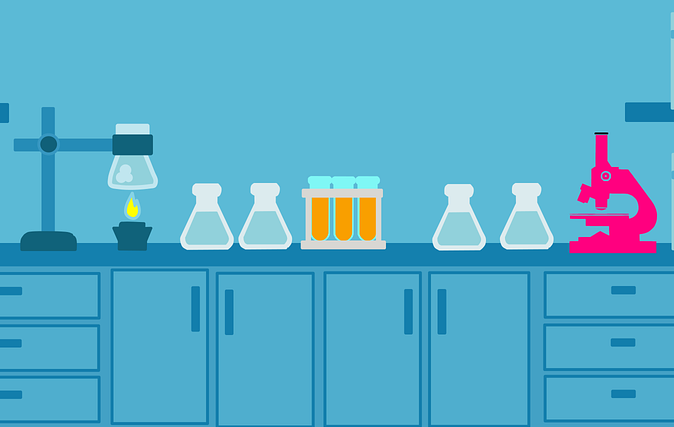Following consultation with University of Toronto instructors with experience using online labs in online/remote course, we would like to share the following suggestions for developing and facilitating student learning activities. As with any technology use, when considering online labs and substitutes, focus on the foundational learning outcomes that can be achieved teaching online/remotely.
Top Three Options
The instructors we consulted suggested these three options were great places to start with online/remote labs and lab substitutes.
- Use open source materials available at no cost. Many high–quality lab simulations and online interactive learning objects are available to be embedded or linked through Quercus course shells.
- License rich content that includes online labs and formative assessment available from publishers and other discipline–specific providers.
- Create your own labs or activity guides using simple video clips of lab protocols and accompanying data sets for analysis. Use a similar strategy for Studio courses or other practical labs.
Consider
- Converting labs to remote teaching and learning requires creativity. The challenge is finding a remote option that will meet the learning outcomes, not necessarily an exact replication of the activity.
- Include active learning strategies and provide feedback to students on their analysis and application.
- Use materials available at home or out–of-doors for observation.
- Create authentic assignments relevant to current COVID-19 situation.
Try This
 Teach key concepts/diagrams and complex processes by substituting whiteboards/chalkboards with digital alternatives.
Teach key concepts/diagrams and complex processes by substituting whiteboards/chalkboards with digital alternatives.
- Use an overhead camera and a webinar tool (e.g., Bb Collaborate).
- Use a tablet and stylus with a webinar tool. Consult with your divisional support contact on how to get started.
Host a synchronous lab using video and webinar tools and convert the lab or activity to a large interactive lecture or discussion.
- Describe and demonstrate or show a video sequence to move through the process and protocols.
- Students can analyze data individually, or in groups for expected or unexpected outcomes.
- Use polls or discussion to compare results.
Convert the lab or studio activity to a module.
- Create modules to guide students through activities within a course in a recommended order, though allow flexibility. All assignments to be completed by the end of the semester.
-
- Module may include instructional videos and images to view, descriptive content, assignment, discussion components for individuals or groups.
-
- Guide learners through an activity or experiment. At the points where they would have made a choice, prediction, or observation, poll the class to see what they think will happen.
Provide access to available Biology/Physics/Chemistry labs.
- Many online labs are available and may be embedded or linked from course pages in Quercus.
-
- Concord Consortium
- Merlot virtual labs
- Chem Collective
- Labster virtual labs [limited divisional licences at UofT]
- Beyond Labz virtual labs [limited licence Summer 2021 at UofT]
-
- Provide students with the opportunity to interpret experimental data, using sample datasets reflecting scenarios students would have encountered in a lab. Develop problem sets that focus on the interpretation of the data.
Utilize simulations and interactive modules.
- Offer students online simulations/modules to replicate in-class activities and achieve learning outcomes.
-
- PHET simulations
- Concord Consortium
- Jove Video library [licence fees apply]
- Engineering simulations
- Ladderane customizable virtual chemistry experiments [licence fees apply]
- MorphoSource biological specimens
- University of Toronto Open Modules Projects
-
- Add additional activities such as data analysis, Q&A sessions, or lab reports based on the simulation.
- Link the simulations from course pages or embed content into Quercus.
- Provide students with the opportunity to interpret authentic experimental data, using sample datasets reflecting scenarios students would have encountered in a lab. Develop problem sets that focus on the interpretation of the data.
- If you can’t find a full simulation of your lab, look for a tool that illustrates a concept you’re trying to demonstrate to students.
Use real-world examples for authentic learning.
- Find a real-world example that illustrates or gives students practice or to observe the concept.
- Is there a current issue or story that relates to the learning outcomes for your lab? Use it as a case study for students and reinforce its relevance to their learning.
- With supporting learning materials, ask students to read an article and describe how it connects to the intended activity.
- Assign a “Design-your-own-experiment” unit using materials found at home.
- Have your students use their phones to record and upload their lab equivalent from home. Use a Quercus discussion to open up the videos for peer feedback.
Reinforce habits of mind and build transferable skills your students can use in a range of contexts.
- Have students practice experimental design.
- Explore underlying rationale that determines specific steps in a given protocol. This will help students with deeper. learning beyond “cookbook” experiments.
- Host a live panel discussion, interview, or Q&A session with scientists who can describe their real-world experiences and relate them to learning outcomes within the curriculum.
- Assign reading of research papers and use a collaborative commenting tool to discuss them. Students write their own responses to the literature as an assignment (e.g., Perusall, Hypothesis).
How To
- Visit leading open repositories to search for discipline-specific resources for use in your lab or studio-based course.
- Visit University of Toronto’s Virtual Lab Suggestions and Recommendations to browse or contribute a resource.
- Contact the library for UTL liaison services and support for remote teaching
- Use simple recording strategies to create videos.
- Create modules in Quercus.
- Check lab resources for accessibility or provide in alternative formats.
Join the Virtual Labs Interest Group
Interested in joining the discussion surrounding virtual labs? Please contact digital.learning@utoronto.ca to find out how you can get involved.